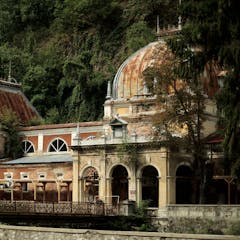
Articles on Dark tourism
Displaying 1 - 20 of 26 articles

We analysed hundreds of selfies and found some people were shamed more than others.

Dark tourism allows people to understand tragic events, experience a catharsis of emotions related to the deaths at a site and it can help people heal from collective trauma.

A recent addition to the “spooky” calendar of events are Gothic festivals, inspired by Gothic literature classics such as “Dracula”.

It’s very important for tourists to understand the risks of visiting volcanic sites and properly prepare themselves for excursions to see volcanic eruptions.

Dark tourism can help shine a commemorative light on the pandemic that has gripped society.

A series of films made between 1927 and 1952 shone a light on the convict ruins of Port Arthur and helped develop dark tourism in Australia.

It isn’t always good advice for tourists to stay away. Often their money can help, as well as their skills.

Performances of prison life are commonplace nowadays in gulag museums. Visitors can vividly imagine it all – the tears, pain and despair.

What does it mean to hold a party in a place with a long history of death and suffering?

For Africans and diasporans, learning about their heritage is important. But it remains to be seen how this will translate into a sustained continental and diasporan engagement.

The 2019 season has been one of Mount Everest’s deadliest for climbers.

The HBO series ‘Chernobyl’ has reignited interest among tourists to visit Pripyat, but growing up in the disaster’s shadow has made us wary.

You might think it morbid, but people have many reasons for visiting the sites of battles and disasters.

A new Netflix series focusing on tourism to sites of historic disasters or atrocities delivers no more than a contemporary version of a freak show.

The blockade of the Kokoda Track by local landowners is a product of the complex political and economic issues currently affecting Papua New Guinea.

Why is it acceptable to leer at photos of murdered women in the name of entertainment?

The former prison, Spike Island, is now one of the world’s top ‘dark tourism’ destinations.

Northern Ireland has a tourist circuit steeped in death and disaster – is this a good thing?

In recent years, the number of people traveling to sites of death, natural disaster, acts of violence, tragedy and crimes against humanity has dramatically increased. Is it immoral?

There is no evidence to support the marketing of an ancient boab in Western Australia as a tree that once held Aboriginal prisoners. The story is a myth that elides the tree’s deep significance to Indigenous people.
